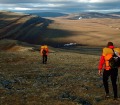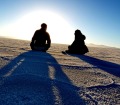What if we were doing one of the most fundamental things wrong, like running? This question fascinated me a few months ago in an article emphasizing the benefits of barefoot shoes. In this experience report, I will share everything I have discovered about barefoot shoes in recent months and my own experiences after 30 days with them. Let’s get started.
What exactly are barefoot shoes?
Barefoot shoes, as the name suggests, are shoes that aim to mimic the feeling of walking barefoot while also providing protection against injuries and dirt. To achieve this barefoot feeling, these shoes have a very thin and flexible sole and offer more space for the toes at the front compared to conventional shoes.
What are the actual benefits of barefoot shoes?
Some of the most common arguments for barefoot shoes include a lower risk of injury, correction of foot misalignment, minimization of back problems, and improved running economy. However, there is still limited scientific evidence supporting these claims, as not many studies are available.
For example, a study comparing the risk of injury between regular shoes and barefoot shoes found no difference. Further studies investigating the minimization of back problems or the correction of foot misalignment were not found. Improved running economy in terms of oxygen consumption while running was evident in barefoot shoes, but was also observed in shoes weighing less than 440g. Many of the arguments for barefoot shoes cannot be scientifically proven at the moment.
My experiences with barefoot shoes
Nevertheless, I decided to test the shoes myself, as I enjoy walking barefoot and the idea of giving my body more influence on my running behavior seemed reasonable. Since there is a barefoot shoe store near me, I visited it, received advice, and went home with the Leguano Aktiv shoes.
During my first walk in these shoes, I noticed how incredibly hard the asphalt floor was. Fortunately, I also walked through a small park, which was a blessing for my feet as my steps were much better cushioned. I plan to wear the shoes a little longer every day to let my feet gradually adjust to them.
My conclusion after 30 days
In the first few days of wearing them, I strongly felt the lack of cushioning while walking, especially on hard surfaces. Initially, it was somewhat uncomfortable when stepping on hard floors, and I experienced slight muscle soreness. After about a week, this feeling slowly disappeared, and currently, I don’t feel anything unusual; walking feels normal.
I am still pleasantly surprised by the feeling when walking on grass, as it truly conveys the barefoot sensation.
Of course, there are also some drawbacks. For example, I cannot wear the barefoot shoes when it’s raining and I want to keep my feet dry because they get wet immediately due to their thinness. This issue is impractical during rainy weather. Additionally, the cool realistic barefoot feeling is somewhat inconvenient on certain surfaces, especially on old cobblestone streets where larger gaps between the stones require more attention to where one steps.
I will definitely continue wearing these shoes next summer and observe how they affect my running experience. I am curious to see how they perform when summer ends and the days become colder and rainier. Perhaps I will make another update then.
If you have any questions or your own experiences with barefoot shoes, feel free to share them in the comments. Thank you for reading and see you next time!










